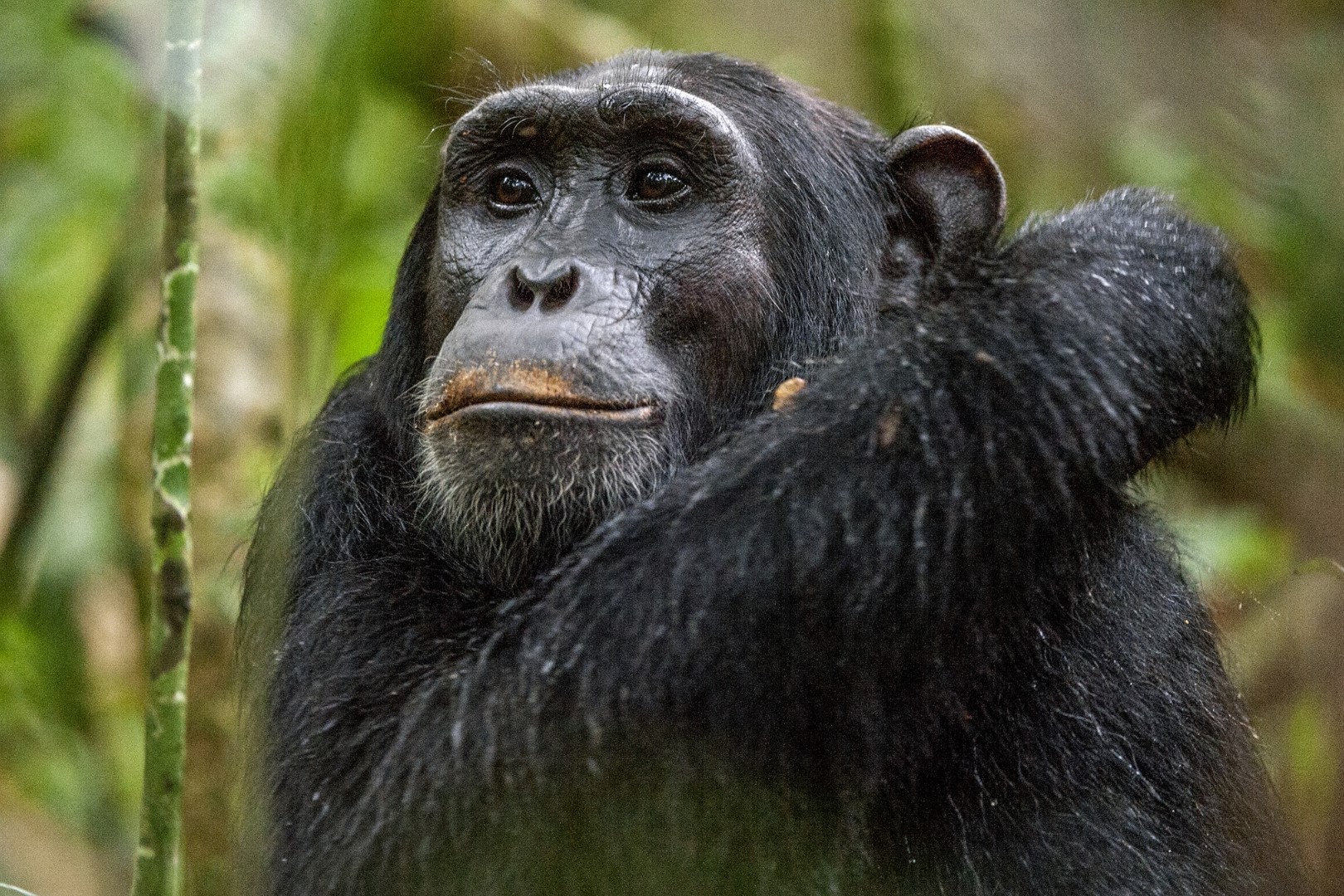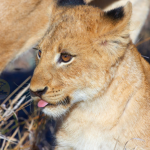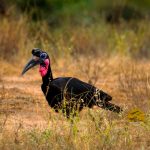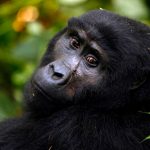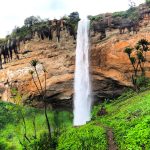Gombe Stream National Park: A Sanctuary of Discovery and Conservation.
Gombe Stream National Park; Situated on the placid eastern shores of Lake Tanganyika in western Tanzania is the Gombe National Park-a true testament to the magic of nature; Being one of the smallest parks in Tanzania, it measures just 52 square kilometers (20 square miles), but Gombe no doubt holds a very special position in many hearts; This park holds a special place in the hearts of wildlife enthusiasts and researchers alike, as it is where the legendary Dr. Jane Goodall made her groundbreaking discoveries about the behavior of wild chimpanzees, forever changing our understanding of these incredible creatures.
A Unique Location: Nature’s Embrace.
Gombe is located just 16 kilometers (10 miles) north of Kigoma, a tranquil town on the shores of Lake Tanganyika, the world’s second-largest freshwater lake; This stunning location is accessible by boat or road, inviting visitors to embark on a journey to this peaceful haven where lush greenery meets sparkling waters.
A Diverse Ecosystem: A Tapestry of Life.
The park’s landscape combines tropical rainforests, grassy plains, woodlands, and rocky slopes-all constituting a home for different forms of wildlife. The thick forests and grasslands offer shelter to the inhabitants. Among the many wonders of Gombe, the chimpanzee population gives this park its main fascination and attracts visitors from all parts of the world. But Gombe’s magic doesn’t end there. The most common other primates one may find in Gombe include olive baboons, red colobus monkeys, and vervet monkeys, each having its peculiar life in this complex web of nature; Birdwatchers will feast on many bird species, while the colored insect wings fluttering are a wonder to behold by an enthusiast. Small mammals and rustling in the underbrush make for this dynamic setting.
Chimpanzee Research: A Legacy of Discovery.
The true claim to fame of Gombe lies in its association with Dr. Jane Goodall, whose groundbreaking research in 1960 permanently changed humankind’s perception of chimpanzee behavior; By living among them, observing their social structures, ways of communication, and use of tools, Dr. Goodall unlocked profound insights into the lives of these remarkable primates; Her work both expanded our knowledge of the chimpanzee and had a far-reaching impact on the study of animal behavior, conservation, and our understanding of what it means to be human; The echoes of her research continue to resound today, and Gombe remains a source of great importance for both the study and conservationof chimpanzees, ensuring that future generations will have the opportunity to see for themselves the extraordinary wildlife that inhabits this park.
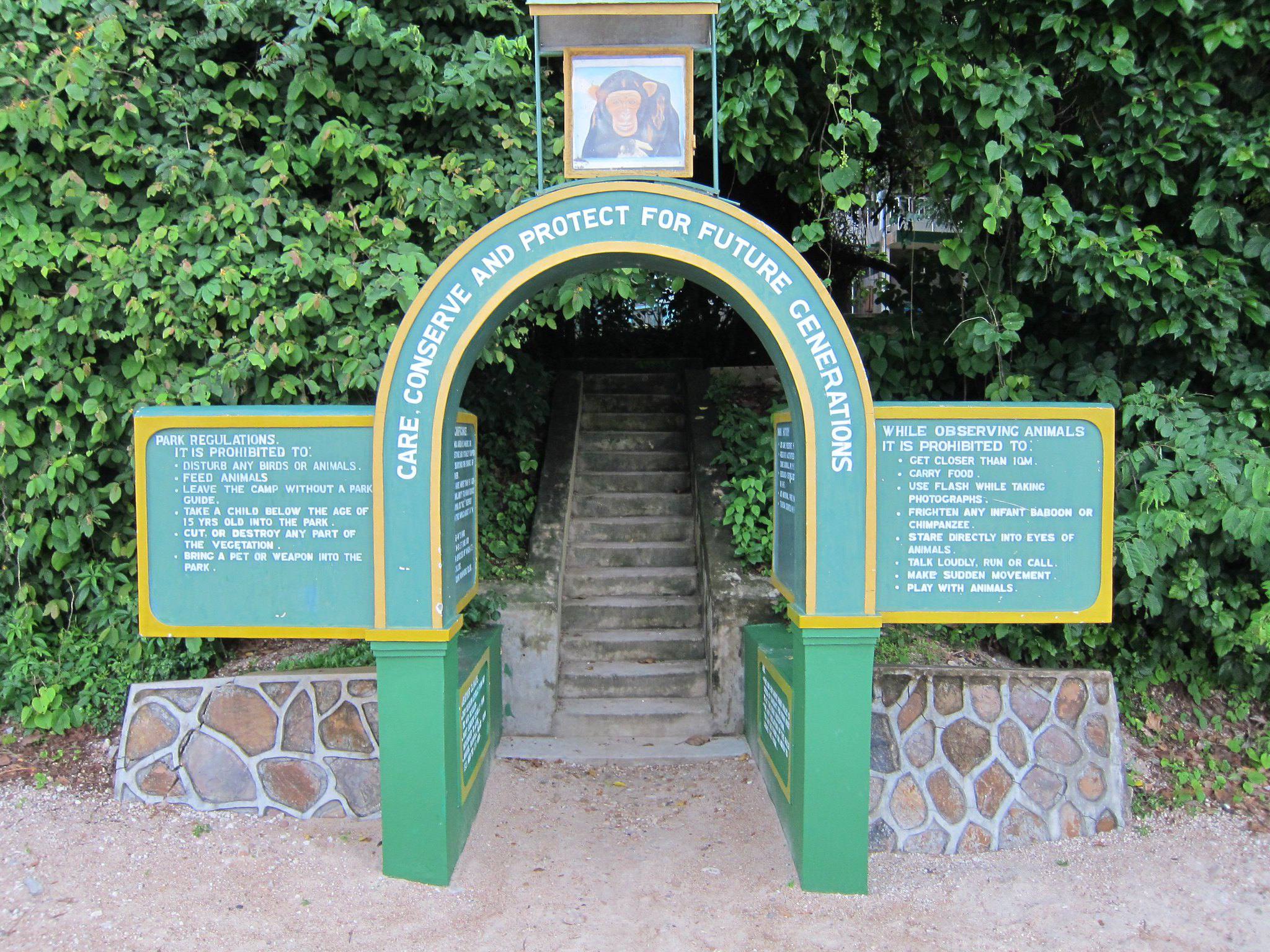
Key Features and Attractions at Gombe NP.
Gombe National Park is an absolute gem that boasts an array of interesting features and attractions that make it a haven for nature lovers and animal enthusiasts alike. The following are some of the key highlights that have been observed in the park:
Chimpanzee Population.
The wild chimpanzee population at Gombe is at the heart of its appeal, its most iconic residents. A visit to Gombe presents an opportunity to catch a glimpse of these intelligent creatures in their natural habitat, given that Dr. Jane Goodall’s pioneering research was based here; Such a spectacle would afford an insight into the complex social structures and behaviors of the chimpanzees while interacting, communicating, and using tools.
Primate Diversity.
Aside from its famous chimpanzees, Gombe is a haven for several other fascinating primate species. The park contains red colobus monkeys, olive baboons, vervet monkeys, and more, each adding its charm and unique behaviors to the ecosystem. For the primate enthusiast, Gombe will be a rich playground in terms of wildlife observation.
Birdwatching Paradise.
Gombe is nothing short of paradise for birdwatchers. Records of over 200 species have been noted, which include fish eagles, kingfishers, sunbirds, and turacos; the different habitats that constitute the park make it just about perfect to catch sight of several avian species; It is the combination of the lush forests with the magnificent back of Lake Tanganyika that creates a haven for species of birds from across the world.
Lake Tanganyika.
On the east, the park borders the spectacular Lake Tanganyika, one of the oldest and deepest freshwater lakes in the world. Its crystal-clear waters not only provide a breathtaking view but also offer opportunities for exciting boat safaris, fishing, and even swimming. Exploring the shores of the lake offers a serene and peaceful addition to your adventure in Gombe.
Hiking Trails and Scenic Views.
Dense forest paths and rocky slope trails curve through Gombe’s hills, paying off spectacular Lake Tanganyika views across spectacular landscapes. The trails either test advanced climbers or provide gentle walks down the heart of nature, both for experienced and inexperienced, respectively.
Scenic Views.
The park’s landscape, from tropical rainforests to grassy plains and rocky slopes, is so varied that at every turn, something new greets the visitor’s eye. This varied topography forms a wonderful backdrop for photography, capturing the essence of East Africa’s natural beauty.
Unique Flora.
The vegetation in Gombe ranges from tall trees and flowers to a heavy growth of greenery. Because of the thick forests, life depends on its balance, and it is really an important part of the regional biodiversity and visually rich landscapes for visitors to see.
Boating Safaris.
The boat safari on Lake Tanganyika is a relaxing way of viewing the lake shores and their aquatic wildlife, like hippos and crocodiles; This calm water, combined with the beautiful scenery, forms an oasis of relaxation, affording yet another angle to the park’s diverse ecosystem.
Community and Cultural Interaction
Gombe’s location allows visitors to connect with the local communities living around the park. The interaction with these communities offers great insights into their traditional practices, customs, and way of life, enriching the experience with a deeper cultural understanding.
Conservation Efforts.
Gombe National Park plays a pivotal role in chimpanzee conservation. Visitors can learn about the ongoing efforts to protect the chimpanzees and their habitat, deepening their appreciation for the park’s importance in global conservation initiatives.
Breathtaking Sunset Views.
As the day winds down, Gombe offers some of the most mesmerizing sunset views over Lake Tanganyika. The vibrant colors reflecting off the water make for an idyllic moment of peace and beauty, perfect to end a day of exploration in this extraordinary park.
In all, Gombe National Park is not a place to see wildlife but to plunge into and feel the nature around, get astonished by the behavior of chimpanzees, and enjoy the landscapes of East Africa; Be it hiking along the forests, boating on the lake, or learning about conservation, Gombe offers a unique and enriching adventure for all who visit.
![]()
Activities and Things to Do in Gombe NP.
Gombe National Park is a nature lover’s paradise, promising activities that will get any guest deeply into its wild and natural beauty. Be you an avid adventurer or seeking an atmosphere of quiet relaxation, it has something for all to enjoy. Here are some of the activities that one could indulge themselves in at Gombe:
Chimpanzee Tracking.
The highlight of Gombe National Park is chimpanzee tracking. Knowledgeable and enthusiastic park rangers guide visitors through treks into the forest in search of these amazing primates. The sight of chimpanzees in their natural environment, viewing their social behavior, intelligence, and special ways, is not one to forget.
Hiking and Nature Walks.
Gombe offers a network of well-marked hiking trails suitable for all levels of hikers. As you walk through the lush forest, you’ll be surrounded by the park’s vibrant flora and fauna, and you’ll be treated to stunning panoramic views of Lake Tanganyika. Hiking and nature walks here provide a perfect way to connect with nature and enjoy the park’s diverse landscapes.
Birdwatching.
With over 200 different bird species, Gombe is a dream place for birdwatching. From the fish eagles that majestically soar over Lake Tanganyika to the colorful kingfishers and shy turacos in its forests, the park avian life is so rich in diversity. Due to the diverse ecosystems that range from the dense forest to the lakeside habitats, Gombe is that exceptional place for all bird enthusiasts.
Boat Safaris.
A boat safari on Lake Tanganyika’s tranquil waters provides a highlight for any visitor to Gombe. As you glide across, you may encounter hippos wallowing in the shallow waters, crocodiles basking in the sun along its shores, and a variety of fish species swimming beneath the surface. Boat safaris also offer great landscapes of the park.
Swimming and Relaxation.
After a day of exploration, what could be more refreshing than taking a swim in the crystal-clear waters of Lake Tanganyika? Whether you’re cooling off after a hike or simply enjoying the tranquility of the lake, this is a perfect way to relax and soak in the serene beauty of your surroundings.
Cultural Interaction.
A visit to Gombe National Park is also an opportunity to learn about the vibrant communities living around the park. Cultural interactions make it possible for visitors to know about their traditions, ways of life, and exceptional ways of coexistence between them and nature. Thus, giving a very rich, engrossing experience.
Photography.
For photography enthusiasts, Gombe is a treasure trove of subjects to capture. From the fascinating behaviors of chimpanzees to the breathtaking landscapes, vibrant flora, and rich wildlife, there are countless opportunities to snap unforgettable moments. Whether you’re a professional photographer or an amateur, Gombe offers stunning scenes to immortalize in your photos.
Fishing at Lake Tanganyika.
This makes Lake Tanganyika a relaxed yet rewarding sport for visitors. The lake hosts various fish species, a number of which occur nowhere else in the world. For such guests who enjoy fishing, it is a unique way to connect with the lake’s ecosystem and feel the serenity within.
Relaxing at Lodges and Campsites.
After an action-filled day, retire to one of Gombe’s quaint lodges or campsites. They provide ample opportunity to rest and enjoy the quiet nature of the park. Whether relaxing with the sounds of nature or the terrific views, the lodges give you a quiet retreat amidst the wilderness.
Educational Talks and Lectures.
Gombe National Park also conducts educational talks and lectures which are very enlightening. Guided by highly qualified guides and researchers, visitors can gain a better understanding of the chimpanzee behaviors, the special ecosystem at the park, and the current conservation mechanisms. This is quite enriching as one builds on existing knowledge and learns more about conservation efforts for this precious environment.
Primate Tracking (Colobus and Baboons).
Besides chimpanzee tracking, other primate species can also be observed in Gombe. Visitors can make primate-tracking excursions to see red colobus monkeys, olive baboons, and other interesting primates in their natural habitats. These experiences offer a broader understanding of the diverse primate life in the park.
A visit to Gombe National Park is a well-rounded and enriching experience that will connect you with nature and wildlife in a very meaningful way; From hiking in the forest, tracking chimpanzees, or simply relaxing at the lake, your memories of visiting this unique and captivating part of the world will remain with you long after your trip is over.
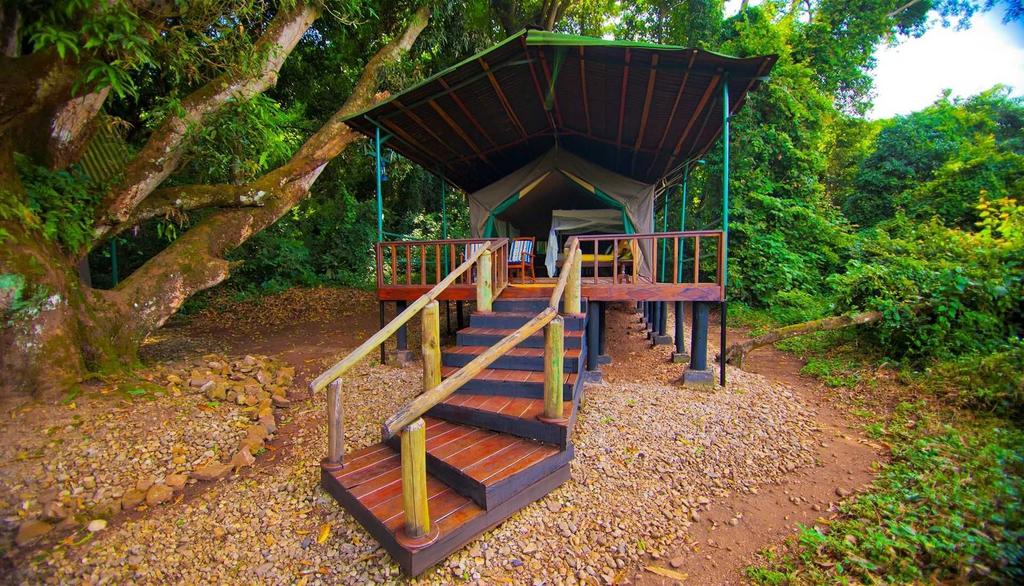
Accommodation at Gombe National Park.
Accommodation at Gombe National Park is made in such a way that it will make one feel comfortable and right in the middle of nature; While the options are relatively basic due to the park’s remote location, they offer a chance to disconnect from the modern world and fully embrace the surrounding beauty. Here are the main accommodation options available:
Gombe Forest Lodge.
Gombe Forest Lodge is the main lodge within the park, ensuring comfortable accommodations with a wonderful view of Lake Tanganyika. The lodge has been set on a hillside and presents a range of en-suite chalets and tents. Each unit in the lodge comes with some basic facilities like beds, mosquito nets, and private bathrooms with hot water. The lodge also features a restaurant where guests can taste both local and international cuisine in order to make it an impeccable place to relax after a day full of exploration.
Campsites.
Visitors interested in a bit more adventure have the chance to enjoy designated campsites, where one can pitch their own tent in Gombe National Park. The campsites are basic, yet allow guests to experience the wilderness of the park. Facilities shared at such camps include pit latrines and shower areas. Camping offers an out-of-this-world chance to listen to the forest’s sounds and ambiance, hence making it so memorable and authentic.
Guesthouses.
Some research facilities within the park offer guesthouses to guests. Guesthouses are Spartan but do have the comforts necessary to sustain a stay. These are not as good as the other options for staying but they are fair and give one a more no-frills way to enjoy the surroundings of the park.
Nearby Accommodations.
For those seeking more luxurious accommodations, Kigoma town, located about 16 kilometers (10 miles) south of Gombe, offers several hotels and lodges; Visitors can choose to stay in Kigoma and arrange day trips to the park, allowing for more comfort while still being close to Gombe’s incredible wildlife.
Booking and Availability.
Because of the limited accommodation options inside Gombe National Park, it is highly recommended to book well in advance, especially in high tourist seasons; Since this is a remote park, availability and reservations need to be confirmed well in advance through the park authorities or tour operators to ensure that a trip is both smooth and enjoyable.
Although the facilities at Gombe National Park might be simple, the uniqueness of this chimpanzee-tracking experience and touring its natural wonders makes it just so worth the stay; Enjoy the park’s tranquility and wild in style, either from a cozy chalet at Gombe Forest Lodge or even under the stars on one of its campsites.
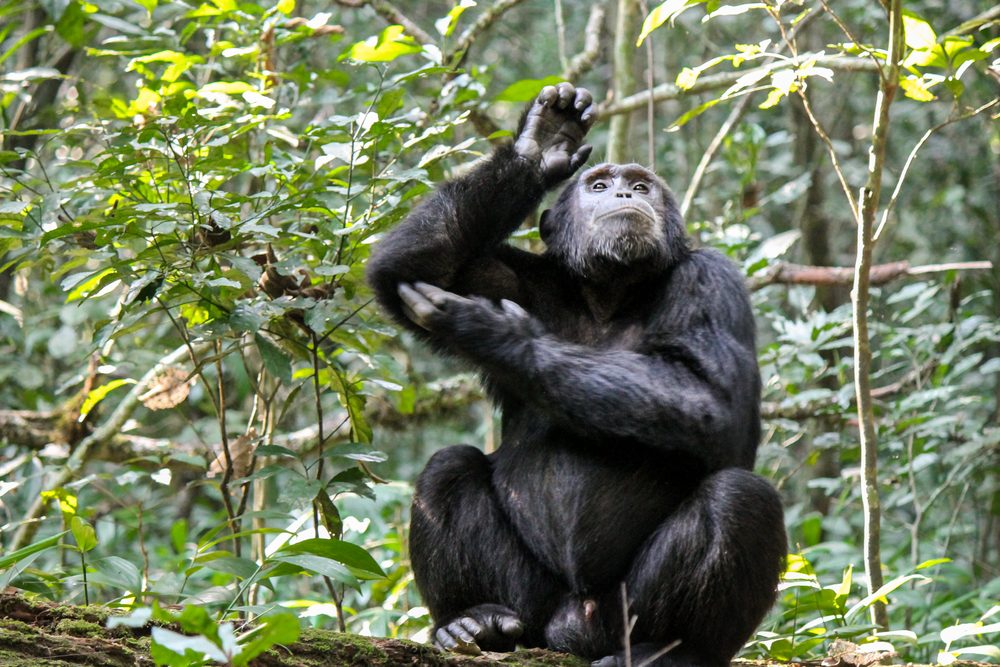
When to Visit Gombe National Park.
The best time to visit Gombe National Park largely depends on your preferences for weather and wildlife viewing. Here’s a breakdown of the different seasons and what you can expect:
Dry Season (June to October):
Weather: The dry season is the best time to visit Gombe because it has mild temperatures, sunny days, and less humidity. These conditions make it easier for outdoor activities such as hiking and chimpanzee trekking.
Wildlife Viewing: With the dry season, water becomes restricted, and thus wild animals will be concentrated around the remaining waterholes and shores of Lake Tanganyika. This concentration enhances the possibility of viewing chimpanzees and other wildlife.
Accessibility: The dry season also favors access within the park because trails and roads are less likely to be muddy and impassable.
Wet Season (November to May):
Weather: During the wet season, it is highly humid and experiences regular rainfall between November and April. While temperatures are still warm, the rain showers can be heavy and intense, making the atmosphere more humid.
Wildlife Viewing: Despite the lush and green park, wildlife viewing may be a bit more difficult during the wet season. The chimpanzees and other animals may not be as easily seen since they have more abundant water sources, and the dense vegetation makes trekking conditions muddier and more difficult.
Birdwatching: The wet season is an excellent time for birdwatching, as migratory birds arrive, boosting the park’s bird diversity. This makes it an appealing time for bird enthusiasts.
February and March: These months represent the peak of the wet season, with heavier rainfall and potential temporary park closures due to challenging conditions.
Overall Recommendations:
Best Time for Wildlife Viewing: The dry season, from June to October, offers the best chances of spotting wildlife, including chimpanzees, in relatively comfortable conditions.
Best Time for Birdwatching: The wet season, between November and May, is ideal for birdwatchers since migratory species come during this time.
Ultimately, Gombe National Park is a destination to be visited all year round; thus, the best time is when one finds most convenient according to one’s interest; In either season of wet and green landscapes full of birds, or the easy viewing and access in dry conditions, the park offers an interesting view in different ways throughout the seasons.
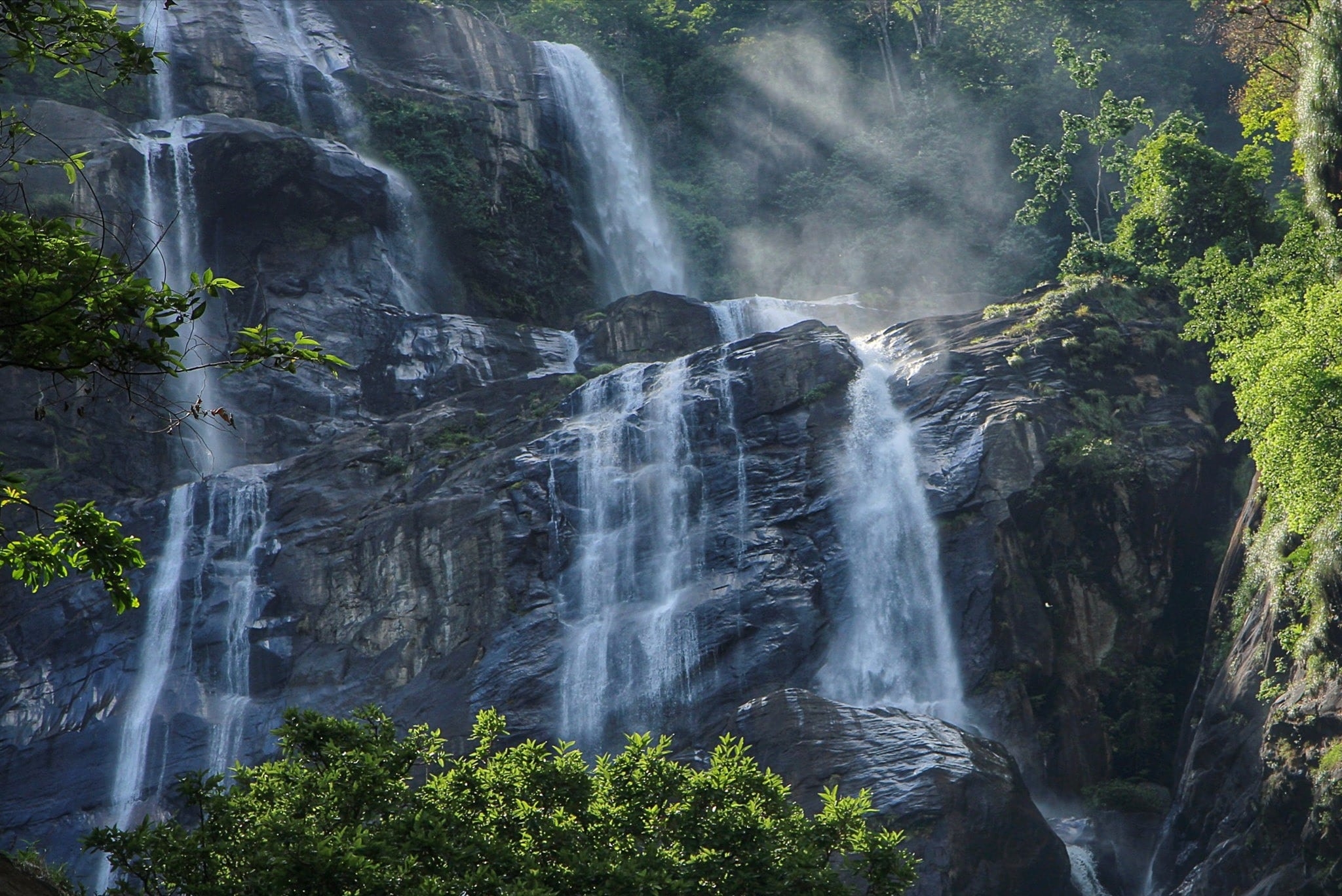
Geography and Geology of Gombe NP.
Gombe National Park is tucked between the shores of Lake Tanganyika in western Tanzania, with a dramatic variation in landscape from steep hills and valleys to tropical forests. The peculiar geography and resultant geological history have created an environment rich in wildlife, most famously chimpanzees. The topography of this park makes it an important ecological and scientific destination.
Geography of Gombe National Park.
Gombe National Park is located in western Tanzania, along the eastern shores of Lake Tanganyika, within the Kigoma Region. It is part of the Albertine Rift, a branch of the East African Rift system. The park’s geography is defined by a diverse and rugged landscape, creating a variety of habitats that support its rich wildlife.
Tropical Rainforests: Most of the park is dominated by dense tropical rainforests that form the core of Gombe’s ecosystem. These are rich in biodiversity, with a tall canopy and an understory covered with diverse plant species. The forests provide important habitat for chimpanzees and other wildlife.
Grasslands: Outside the rainforests, Gombe also contains patches of open grasslands. The grassy areas constitute important feeding grounds for a number of species and form a striking contrast to the dense forest habitats.
Woodlands: The park contains woodland areas, with wider spacing between trees than in the heavy rainforest. Woodlands add to the park’s ecological diversity and home various species of plants and animals.
Rocky Slopes: Gombe National Park is generally characterized by steep, rocky slopes and escarpments, which rise right from the shores of Lake Tanganyika; These raised terrains offer dramatic views of this lake and add to the scenic beauty of the park, thus making it quite popular for exploration.
Geology of Gombe National Park.
Geology at Gombe National Park is influenced by its setting within one of the most active and usually dynamic geological areas in the world: the East African Rift system. The geological features of the park are a product of tectonic processes, volcanic activity, and the formation of Lake Tanganyika.
Rift Valley Formation: The East African Rift system is a tectonic plate boundary where the African Plate is slowly splitting into two separate plates; A branch of this system, known as the Albertine Rift, is responsible for the creation of the western portion of the East African Rift Valley; This tectonic activity has shaped the park’s landscape, creating the rift escarpment that offers stunning views of the lake from within the park.
Volcanic Activity: While Gombe itself is not a recipient of active volcanic activity, its geological history does include major volcanic events; The volcanic rocks in the area are the result of past eruptions and contribute to the uniqueness of the landscape and geology of the park.
Lake Tanganyika: Lake Tanganyika borders Gombe National Park to the east and is the second-largest freshwater lake by volume and the longest in the world. It was formed by tectonic rifting, hence a tectonic lake. This lake adds to the biodiversity of the park, supporting both aquatic and terrestrial species.
The geography and geology of Gombe National Park combine to give it a unique and diverse environment. The rugged terrain, dense forests, and proximity to Lake Tanganyika provide a rich habitat for wildlife, especially chimpanzees. Its geological history, shaped by tectonic processes and volcanic activity, makes Gombe a fascinating destination for both wildlife enthusiasts and geology buffs. The variety of landscapes makes this park very important in terms of wildlife conservation, scientific research, and environmental education.
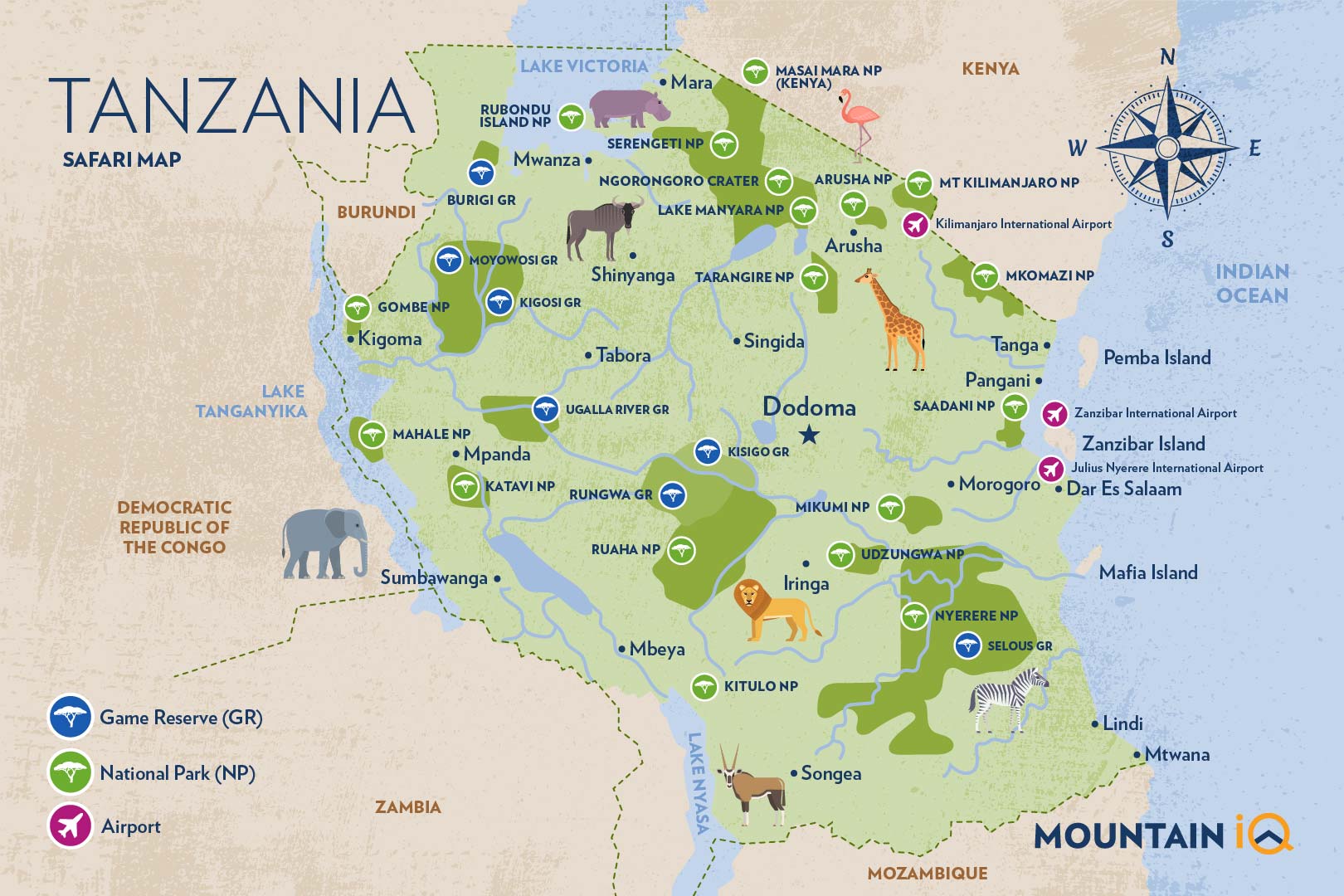
Getting to Gombe National Park.
The Gombe National Park can be accessed by the use of varied transport modes: by air or boat. Gombe national park is isolated in western Tanzania and thus less accessible. Following is major phases leading to the park:
International Travel: If you are traveling from outside Tanzania, you will have to fly into one of the major international airports in the country; The most common entry points are Julius Nyerere International Airport (DAR) in Dar-es Salaam or Kilimanjaro International Airport (JRO) near Arusha. These airports are well-connected with various international destinations.
Domestic Flight to Kigoma: From Dar-es-Salaam or Arusha, you take a domestic flight to Kigoma. Kigoma is the closest town to Gombe National Park and serves as the entry point to the park. Local airlines operate flights between Dar es Salaam and Kigoma or between Arusha and Kigoma. The flight time takes about 1 to 2 hours depending on the airline and routing.
Boat Transfer to Gombe National Park: From Kigoma, you will go on a boat transfer across the lake to Gombe National Park. Accessible by boat from Kigoma, this is a necessary requirement for traveling into Gombe National Park. This takes about 1-2 hours depending on weather conditions and the conditions of the lake. Transfers are by boats operating early in the morning and late afternoon.
Park Entry and Permits.
At an entrance before entering Gombe National Park, please first obtain the necessary permit to do activities like chimpanzee trekking. There is usually a limited number, hence very vital to book them early with the Tanzania National Parks Authority/TANAPA and its authorized tour operators. CHIMPANZEE HABITUATION (all-year-round) $: USD 100.
Note: This is a trip that must be well-planned in advance and coordinated with tour operators who know the logistics involved in reaching Gombe National Park; travel to the park is occasionally affected by weather conditions, best to be prepared for possible delays or changes in the schedule.
Furthermore, please check current travel advisories and regulations as well as visa requirements for Tanzania before finalizing your travel plans. Gombe National Park requires a little bit of planning to travel there, but seeing the wild chimpanzees in their home environment and seeing the scenic landscape pays off all the work involved in planning.
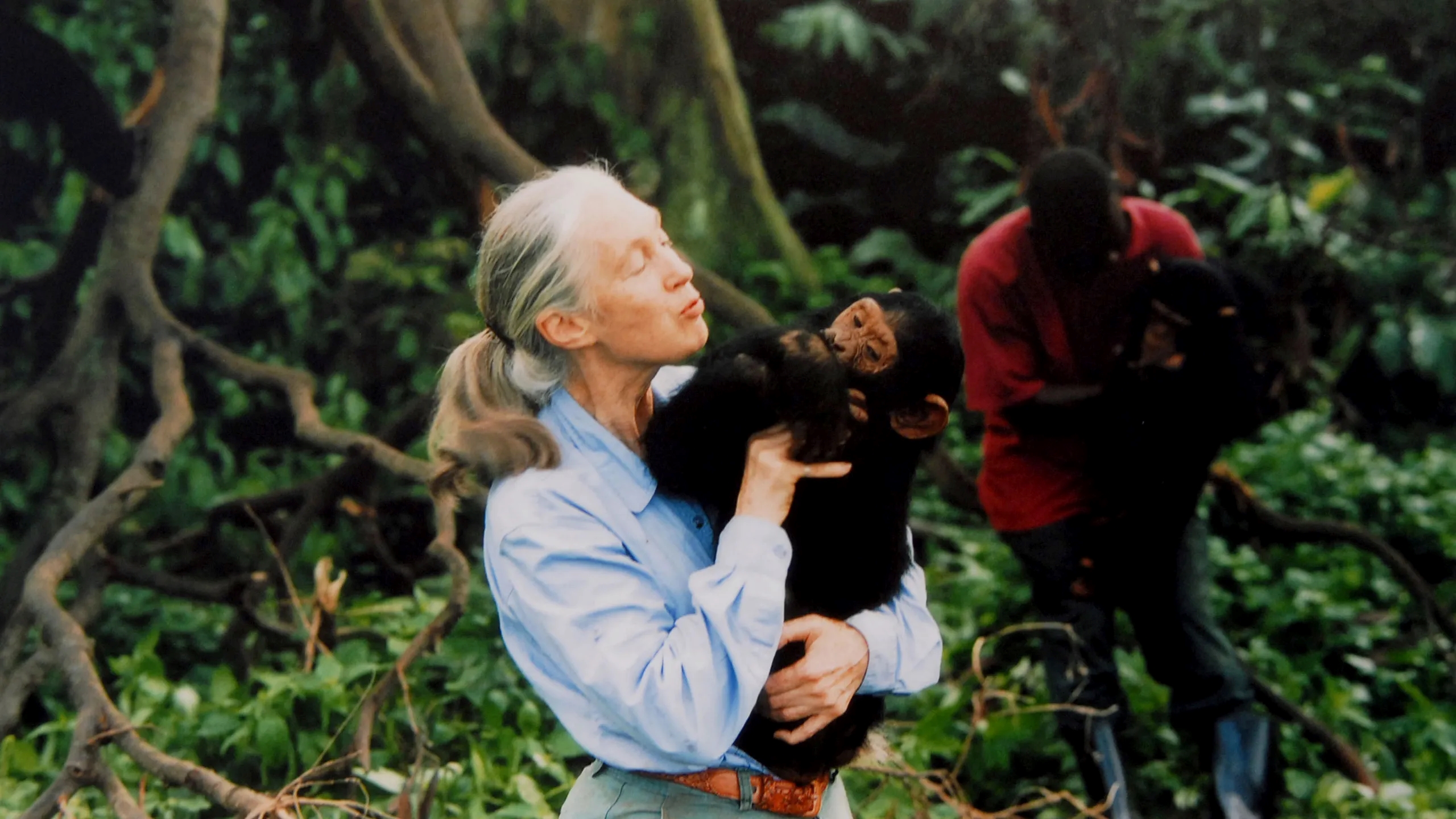
Conservation Measures and Challenges at Gombe NP.
The main aim of Gombe National Park is the conservation of ecosystems through anti-poaching, habitat restoration, and research for resource protection, especially chimpanzees. However, the ecosystems are threatened by deforestation, human-wildlife conflict, and climate change. Community involvement and sustainable land-use practices have been tried as a means to overcome these challenges.
Conservation Measures at Gombe National Park.
The Government actively engages in different conservation activities meant to protect the unique wildlife and natural habitats found within Gombe National Park. Some of the key conservation efforts include:
Wildlife Protection and Anti-Poaching: Protection for the wild animals of this park, especially the chimpanzees, from poaching and other illegal activities is provided. Anti-poaching patrols and surveillance are conducted to deter illegal hunting and the capture of animals for the pet trade.
Chimpanzee Monitoring and Research: This have continued in Gombe National Park for its population. In addition, understanding the behavioral and social dynamics of the chimpanzee communities helps to institute better conservation mechanisms.
Habitat Restoration: The conservation fraternity works towards the restoration of habitats within the park and protecting it. It includes reforestation, halting deforestation, and human activities management so as not to affect the environment.
Community Engagement and Education: It is important to realize that conservation will only work if the local communities that live around Gombe National Park are involved; Efforts are made to raise awareness about the importance of wildlife conservation and involve communities in sustainable practices that benefit both the environment and local livelihoods.
Sustainable Tourism: Tourism within Gombe National Park is designed to be as nondestructive to the environment and wildlife as possible. Ensuring that responsible forms of tourism provide a good experience for the visitors while protecting the natural resource base of the park.
Challenges at Gombe National Park .
Despite these conservation measures, Gombe National Park still faces many challenges in its quest for conservation:
Human-Wildlife Conflict: Conflicts may arise between wildlife, especially chimpanzees, and the local communities as human settlement increases around the park. Raiding of crops by primates and other animals leads to negative perceptions of wildlife, thus challenging conservation efforts.
Habitat Fragmentation: Human activities such as agriculture and wood logging fragment the habitat, reducing the potential for wildlife movement and influencing natural behaviors and gene flow.
Illegal Logging and Charcoal Production: Illegal logging for timber and charcoal production is one of the major threats to forests and biodiversity within the park.
Climate Change: Climate change perturbs resource availability to wildlife through unpredictable weather conditions that could worsen existing conservation issues.
Limited Resources and Infrastructure: Gombe National Park faces limitations in terms of funding, manpower, and infrastructure, which limits effective conservation management.
Disease Outbreaks: Diseases such as those affecting chimpanzees, can have devastating effects on the park’s wildlife populations.
All these challenges call for continued collaboration among conservation organizations, local communities, government agencies, and other stakeholders in a sustainable management system with increased awareness of the importance of conservation for long-term protection of this unique biodiversity and ecosystem.
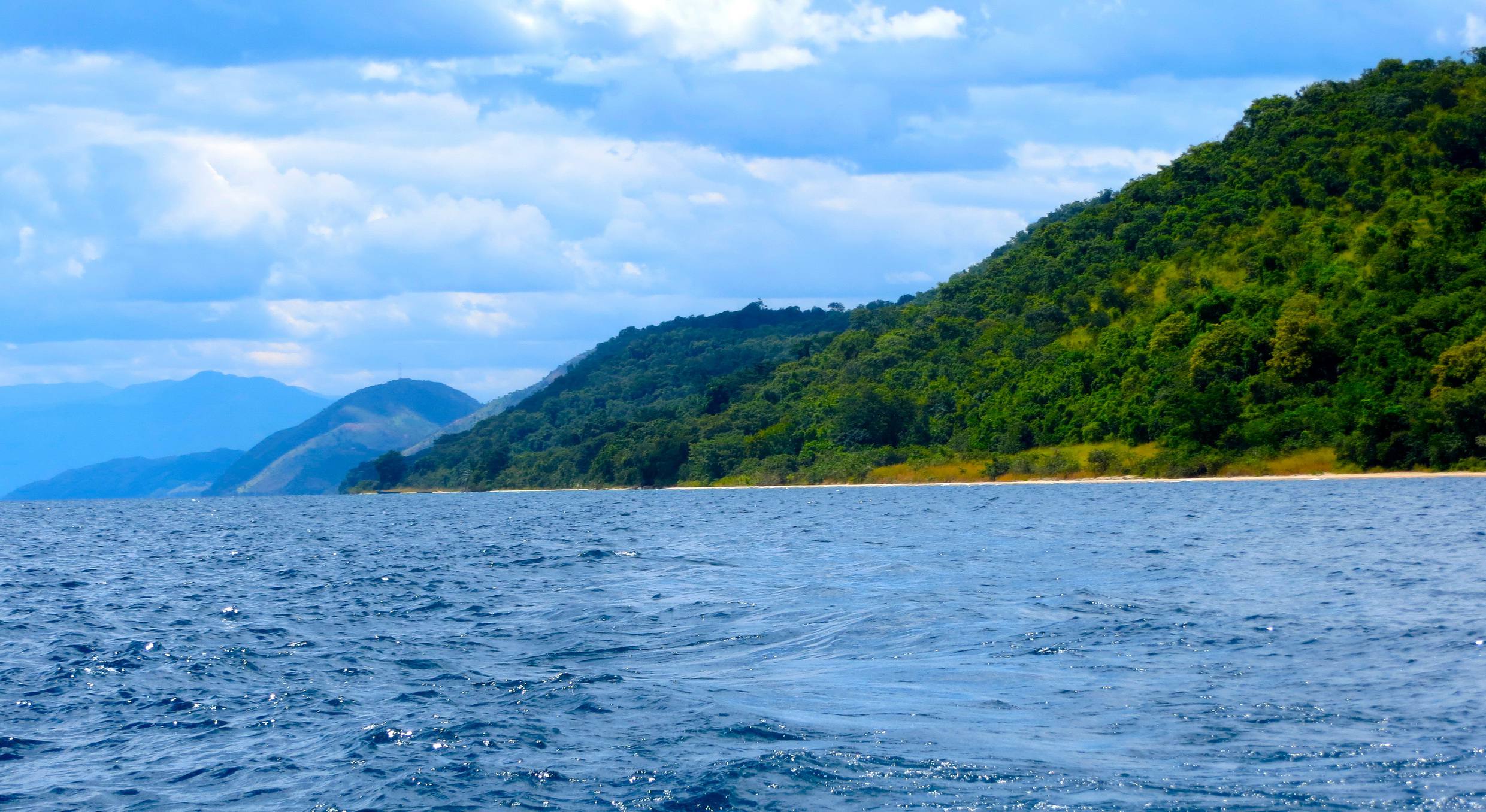
What to Pack for Gombe National Park.
When planning a visit to Gombe National Park, it’s essential to pack appropriately to ensure a comfortable and enjoyable experience in this remote and unique destination. Here is a list of essential items to pack for your trip to Gombe National Park:
Clothing:
- Lightweight and breathable clothing suitable for warm and humid weather during the day.
- Long-sleeved shirts and pants to protect against insects and the sun.
- Light rain jacket or poncho: Rain showers can occur any time of the year, even in the dry season.
- Comfortable walking shoes or hiking boots with good traction for trekking in the forest.
Personal Items:
- Valid passport and necessary travel documents, including visas if required for entry to Tanzania.
- Travel insurance that covers medical emergencies and evacuation.
- Prescription medications and a basic first aid kit.
- Insect repellent containing DEET to prevent mosquito and other bug bites.
- Sunscreen and lip balm to avoid sunburn.
Photography and Electronics:
- Camera for capturing wildlife and scenic moments: Take extra batteries and memory cards.
- Binoculars for birding and/or long-distance game viewing.
- Portable power bank, since electricity may be limited or unavailable.
Daypack and Essentials:
- A small daypack in which to carry water, snacks, camera, and other items on treks and activities.
- Water bottle or hydration system for hydration throughout the day.
- Snacks – energy bars and nuts for energy during hikes and treks.
Other Items:
- Flashlight or headlamp with extra batteries for use at night or in areas with limited lighting
- Personal toiletries and basic hygiene items
- Towel and swimsuit if you plan to swim in Lake Tanganyika.
- Light travel sleeping bag or sheet if camping is involved in your tour program.
- Cash in Tanzanian Shillings for park fees, tips, and souvenirs, as there may be limited access to ATMs in the area.
Optional Items:
- Lightweight binoculars for birding and game viewing.
- Field guidebooks on birds and game of the region.
- Sun hat or cap for protection against the elements.
- Trekking poles for extra support during longer hikes.
Note: Pack lightly and avoid items not deemed essential, as luggage space may be very limited, especially if traveling on small aircraft to Kigoma. Be very aware of weight restrictions, both for domestic and charter flights. Remember, for example, to always keep the park clean-not littering or leaving any trash behind-and follow rules such as those regarding trekking and wildlife observation, presented by the park rangers and guides.
Comments on Gombe National Park.
Gombe National Park represents the basic entity for wildlife conservation; in depth, it has provided extremely valuable lessons from animal behaviors to ecology through long-term research; The park is especially famous for long-term studies of chimpanzees, yielding historic insights into its social structures, use of tools, and means of communication; It has continued to remain one of the most popular places where one can have quite a special and unique experience that it offers to visitors of observing these marvelous primates in their natural environment; Besides the chimpanzees, Gombe contains several high-biodiversity ecosystems that make it not only an important location from a conservation point of view but a lifetime experience for nature lovers and researchers alike.


